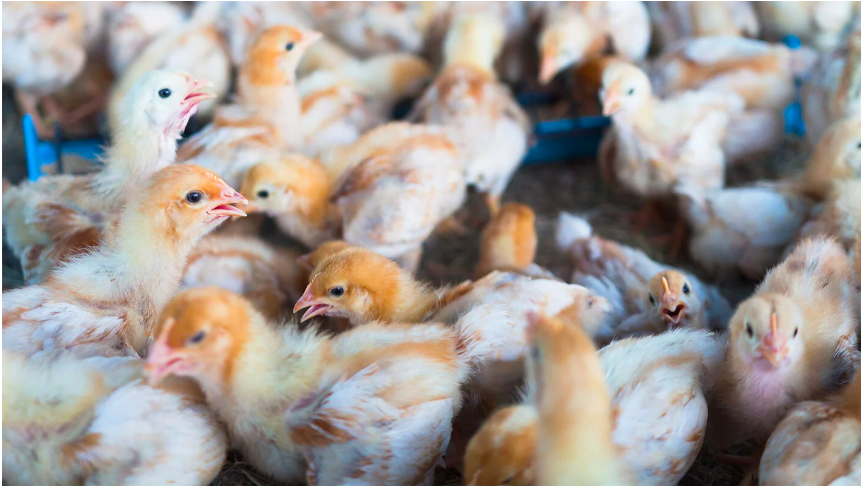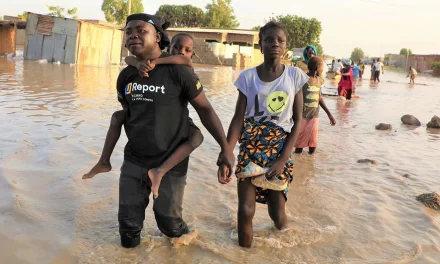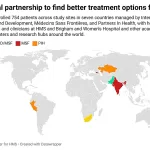Situation at a glance
Description of the situation
On 20 August 2024, the IHR NFP of the Kingdom of Cambodia notified WHO of one case of human infection with influenza A(H5N1) in a 15-year-old with no underlying medical conditions, from Prey Veng Province. The child had an onset of fever on 11 August 2024. On 17 August, the patient was hospitalized in Phnom Penh at a severe acute respiratory infection (SARI) sentinel site. On admission, the patient presented with a fever, cough, sore throat, and difficulty breathing, and on the same day, treatment with oseltamivir was initiated. Nasopharyngeal and oropharyngeal swab specimens were collected on 17 August, and the patient died on 20 August.
Swab specimens collected on 17 August arrived at the National Institute of Public Health of Cambodia on 19 August and tested positive for influenza A(H5N1) by quantitative reverse transcription polymerase chain reaction (RT-qPCR) on 20 August. The results were confirmed by the Institut Pasteur du Cambodge (IPC) the same day. The sample was successfully sequenced, and phylogenetic analysis of the haemagglutinin (HA) gene showed the virus to be H5 clade 2.3.2.1c, similar to the viruses circulating in Cambodia and Southeast Asia since 2013-2014. However, its internal genes belong to H5 clade 2.3.4.4b viruses. This novel reassortant influenza A(H5N1) virus has been detected in human cases reported in Cambodia since late 2023.
According to early investigations, there were reports of dead poultry in the village about five days before the patient’s onset of illness. The patient’s family was given some of these chickens for consumption and the girl was exposed to the chicken while preparing food.
The Cambodian Communicable Disease and Control Department (CDC), Ministry of Health, and local Rapid Response Team conducted further investigations. Six close contacts were identified, and oseltamivir was provided to them. All close contacts are being monitored and are asymptomatic. Further investigations and response measures are ongoing for public and animal health and the environment. Test results for samples collected from chickens and ducks from the village are pending.
Avian influenza A(H5N1) was detected for the first time in Cambodia in December 2003, initially affecting wild birds. From then until 2014, sporadic human cases were reported due to transmission from poultry to humans, either directly or indirectly through contaminated environments. Between 2014 and 2022, there were no reports of human infection with A(H5N1) viruses. However, the re-emergence of human infections with A(H5N1) viruses in Cambodia was reported in February 2023; six cases were reported that year. This case is one of 10 human cases of influenza A(H5N1) infection reported in Cambodia in 2024. Two of the 10 cases were fatal, and nine involved persons under 18 years of age. From 2003 to the present, 72 cases of human infection with influenza A(H5N1), including 43 deaths (CFR 59.7%), have been reported in the country.
Epidemiology
Animal influenza viruses normally circulate in animals but can also infect humans. Infections in humans have primarily been acquired through direct contact with infected animals or contaminated environments. Depending on the original host, influenza A viruses can be classified as avian influenza, swine influenza, or other types of animal influenza viruses.
Avian influenza virus infections in humans may cause disease ranging from mild upper respiratory tract infection to severe disease and death. Conjunctivitis, gastrointestinal symptoms, encephalitis and encephalopathy have all been reported. There have also been several detections of A(H5N1) virus in asymptomatic persons who had exposure to infected birds.
Laboratory tests are required to diagnose human infection with avian influenza. WHO periodically updates technical guidance protocols for the detection of zoonotic influenza using molecular methods, e.g., RT-PCR. Evidence suggests that some antiviral drugs, notably neuraminidase inhibitors (oseltamivir, zanamivir), can reduce the duration of viral replication and improve prospects of survival in some cases.
From 2003 to 20 August 2024, 903 cases of human infections with avian influenza A(H5N1), including 464 deaths (CFR 51.4%), have been reported to WHO from 24 countries. Almost all of these cases have been linked to close contact with infected live or dead birds, or contaminated environments.
Public health response
The Ministry of Health’s national and sub-national rapid response teams have been deployed to conduct further investigations and respond to this avian influenza outbreak. Response measures are being implemented in coordination with the local authorities, the Ministry of Environment, and the Ministry of Agriculture, Forestry, and Fisheries.
- Investigations are ongoing to identify the presence of the disease in animals and sources of transmission, detect suspected animal and human cases, and prevent community transmission.
- Close contacts are being monitored and provided with oseltamivir treatment as prophylaxis.
- Health education campaigns are being conducted in affected villages.
- Stamping-out measures are being implemented, including culling of poultry, safe disposal of carcasses and potentially contaminated materials, and cleaning and disinfection.
WHO has provided technical assistance to the investigation and response, including efforts to increase public awareness and adoption of preventive behaviours, and raise clinical suspicion of avian influenza amongst healthcare providers to support early detection and strengthen clinical management of cases. WHO continues to collaborate with partners to ensure coordinated actions for a One Health response.
WHO risk assessment
From 2003 to 20 August 2024, a total of 903 human cases of infection of influenza A(H5N1) have been reported globally to WHO from 24 countries, including this case. Almost all cases of human infection with avian influenza A(H5N1) have been linked to close contact with A(H5N1)-infected live or dead birds or mammals, or contaminated environments.
Available epidemiological and virological evidence suggests that A(H5N1) viruses have not acquired the capacity for sustained transmission among humans. Therefore, the likelihood of sustained human-to-human spread is low at present. Since the virus continues to circulate in poultry, particularly in rural areas in Cambodia, further sporadic human cases can be expected.
Currently, based on available information, WHO assesses the overall public health risk posed by this virus to be low. The risk assessment will be reviewed as needed if additional information becomes available.
Close analysis of the epidemiological situation, further characterization of the most recent influenza A(H5N1) viruses in both human and poultry populations, and serological investigations are critical to assess associated risks to public health and promptly adjust risk management measures.
Vaccines against seasonal influenza viruses will not protect humans against infections with influenza A(H5N1) viruses. Candidate vaccines to prevent influenza A(H5) infection in humans have been developed for pandemic preparedness in some countries. WHO continues to update the list of zoonotic influenza candidate vaccine viruses (CVV), which are selected twice a year at the WHO consultation on influenza virus vaccine composition. The list of such CVVs is available on the WHO website, at the reference below. In addition, the genetic and antigenic characterization of contemporary zoonotic influenza viruses is published here.
WHO advice
This event does not change WHO recommendations on public health measures and influenza surveillance.
The public should avoid contact with high-risk environments, such as live animal markets/farms and live poultry or surfaces that might be contaminated by poultry droppings. Additionally, maintaining good hand hygiene through frequent hand washing with soap or using alcohol-based hand sanitizer is recommended.
The general public and at-risk individuals should immediately report instances of illness or unexpected deaths in animals to veterinary authorities. Handling sick or unexpectedly dead poultry including slaughtering, butchering, and preparing such poultry for consumption, should be avoided.
Any person exposed to potentially infected animals or contaminated environments who feels unwell should seek healthcare promptly and inform their healthcare provider of their possible exposure.
WHO does not recommend special traveler screening at points of entry or other restrictions due to the current situation of influenza viruses at the human-animal interface.
States Parties to the International Health Regulations (2005) are required to immediately notify WHO of any laboratory-confirmed case of a human infection caused by a new subtype of influenza virus. Evidence of illness is not required for this notification.
Further information
- Global influenza programme, human-animal interface: https://www.who.int/teams/global-influenza-programme/avian-influenza
- World Health Organization. Practical interim guidance to reduce the risk of infection in people exposed to avian influenza viruses: https://iris.who.int/handle/10665/378626
- World Health Organization. Risk assessments and summaries of influenza at the human-animal interface: https://www.who.int/teams/global-influenza-programme/avian-influenza/monthly-risk-assessment-summary
- World Health Organization Western Pacific. Avian Influenza Weekly Update: https://www.who.int/westernpacific/emergencies/surveillance/avian-influenza
- World Health Organization. Protocol to investigate non-seasonal influenza and other emerging acute respiratory diseases: https://www.who.int/publications-detail-redirect/WHO-WHE-IHM-GIP-2018.2
- World Health Organization. Summary of Key Information Practical to Countries Experiencing Outbreaks of A(H5N1) and Other Subtypes of Avian Influenza: https://apps.who.int/iris/rest/bitstreams/1031911/retrieve
- World Health Organization. Maintaining surveillance of influenza and monitoring SARS-CoV-2 adapting Global Influenza surveillance and Response System (GISRS) and sentinel systems during the COVID-19 pandemic: https://www.who.int/publications/i/item/maintaining-surveillance-of-influenza-and-monitoring-sars-cov-2-adapting-global-influenza-surveillance-and-response-system-(gisrs)-and-sentinel-systems-during-the-covid-19-pandemic
- World Health Organization. Case definitions for the four diseases requiring notification in all circumstances under the International Health Regulations (2005): https://www.who.int/publications/m/item/case-definitions-for-the-four-diseases-requiring-notification-to-who-in-all-circumstances-under-the-ihr-(2005)
- Food and Agriculture Organization of the United Nations. Evidence-based risk management along the livestock production and market chain: Cambodia: https://www.fao.org/publications/card/en/c/CA7319EN/(link is external)(link is external)(link is external)
- Disease Outbreak News. Avian Influenza A (H5N1) – Cambodia: https://www.who.int/emergencies/disease-outbreak-news/item/2024-DON501
- Food and Agriculture Organization of the United Nations. Animal Production and Health Division (NSA) https://www.fao.org/agriculture/animal-production-and-health/en(link is external)
- World Health Organization. Addressing the low-risk perception of avian flu in Cambodia: https://www.who.int/westernpacific/news-room/feature-stories/item/addressing-the-low-risk-perception-of-avian-flu-in-cambodiaCitable reference: World Health Organization (2 September 2024). Disease Outbreak News; Avian Influenza A (H5N1) in Cambodia Available at: https://www.who.int/emergencies/disease-outbreak-news/item/2024-DON533











